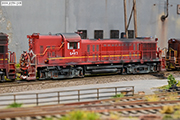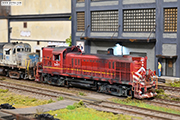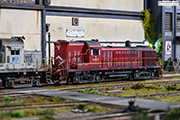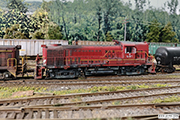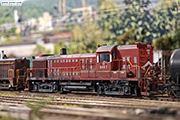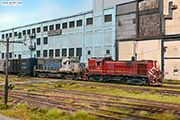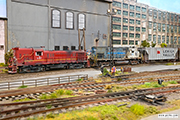ALCo RS-3 "Hammerhead" DIESEL LOCOMOTIVE - BOWSER EXECUTIVE DCC/Sound
Brief history.
The original RS-3 was a 1,600 hp (1.2 MW) B-B diesel-electric locomotive manufactured from May 1950 to August 1956 by American Locomotive Company (ALCO) in partnership with General Electric (ALCo-GE) and its subsidiary Montreal Locomotive Works (MLW). A total of 1.418 were produced: 1.272 for american railroads, 98 for canadian railroads, 48 for brazilian railroads and seven for mexican railroads. The main users were: New York Central 120 units, Pennsylvania Railroad 112, Louisville & Nashville 106, Delaware & Hudson 101, Erie Lackawanna 72, Reading 67, Seabord Air Line 56, Southern Railway 53. Many units survive working for smaller and private railroads.
ALCO built the RS-3 to meet competition from EMD, Fairbanks-Morse, and Baldwin Locomotive Works, who required a reliable, versatile, yet more modern shunting locomotive than the locomotives currently in service. In the case of ALCO, the builder made further improvements to create new lines of locomotives derived from the earlier RS-2 series. Visually, the RS-3 was very similar to the RS-2. Both had much more refined styling than ALCO's first diesel, the RS-1. Additional curves with heavy chamfers on the corners and edges gave the unit a much more streamlined appearance. At the time, some railroads chose to use their RS3 diesel locomotives in passenger/commuter service. Many railroads appreciated this design for its versatility and reliability. The RS-3s, with an increased power to 1,600 hp, they were among the most popular locomotives in Alco shops.
The "Hammerhead" variant of the well-known and widespread series ALCo RS-3 had been requested by the Pennsylvania Railroad and Western Maryland companies for the hauling of specific passenger trains. The only five units modified and delivered in December 1953, were equipped with a steam generator and aerodynamic brakes for whose installation it was necessary to modify the bodywork in the short nose area, raising it until it joined the roof. The awkward and unusual appearance brought them the nickname "Hammerhead".
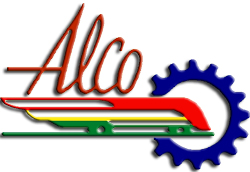
Specifications / Technical data (DL-600)
Builder: American Locomotive Company (ALCo)
Wheels: B-B
Gauge: 4 ft 8,5 in
Loco weight: 247.100 lb
Lenght: 17,22 meters
Engine power: Diesel
Prime mover: Alco 244 V12 turbocharged
Horsepower: 1.600 Hp
Speed: 65-85 mph
Build date: 1950-1956
Units built: 1418 (146 built in Canada by MLW)
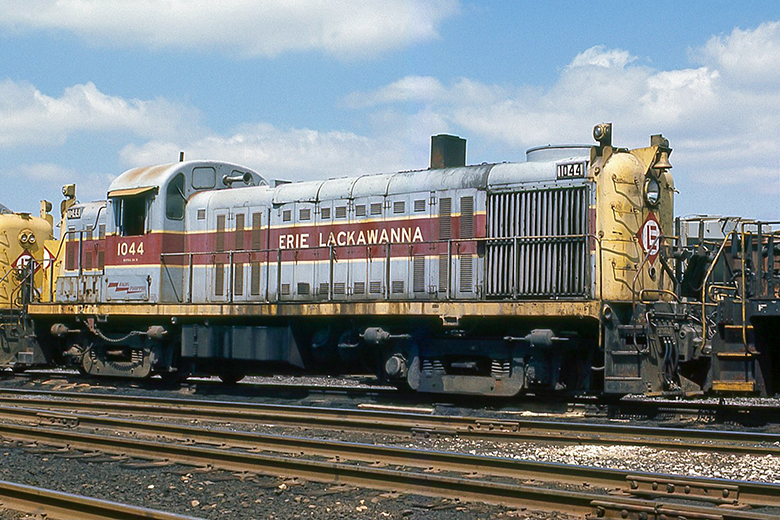
ALCo RS-3 EL #1044 s/n 78574 built 04/1951 in 1976.
(Locophotos.com copyright)
(Locophotos.com copyright)
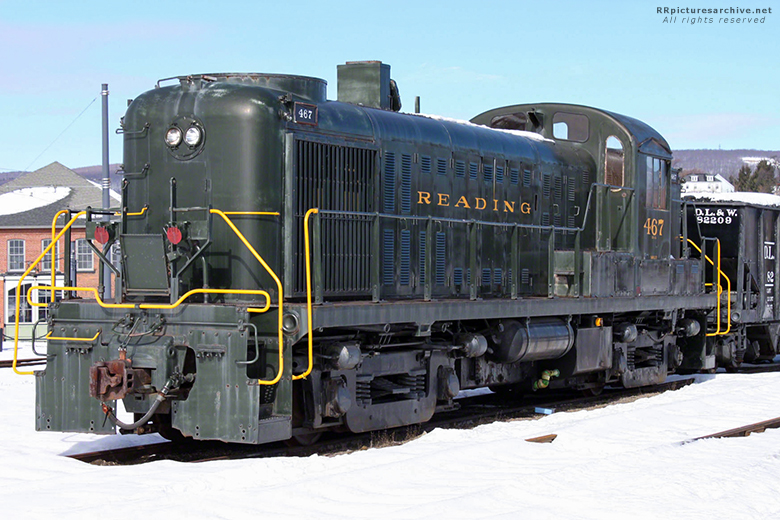
ALCo RS-3 RDG #4082 s/n 79873 built 05/1952 in 1987.
(RRpicturesarchive.net copyright)
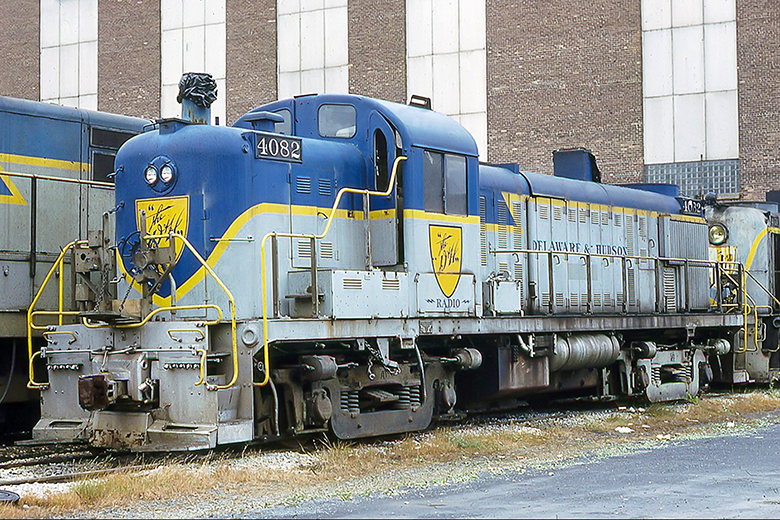
ALCo RS-3 D&H #4082 s/n 79603 built 01/1952 in 1977.
(Locophotos.com copyright)
(Locophotos.com copyright)
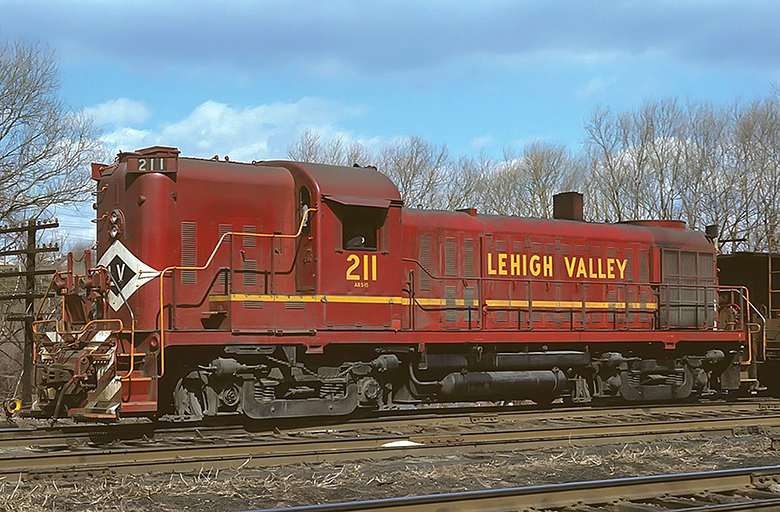
ALCo RS-3 "Hammerhead" LV #211 s/n 80580 built 12/1953 in 1976.
(Locophotos.com copyright)
(Locophotos.com copyright)
Conrail (former Lehigh Valley 211) number #5487.
The Lehigh Valley locomotive No. 211 was originally built by ALCo for the Pennsylvania Railroad in December 1953 and delivered as PRR #8445. It is unique in that it features a short, raised hood used to house the dynamic brakes and a steam generator for heating the passenger cars. This unit is one of five RS-3s equipped with both dynamic brakes and a steam generator. The original PRR #8445 was built specifically for support service between Emporium and Keating Summit, Pennsylvania on the Harrisburg-Buffalo line. The steam generator was installed to allow the road-switcher to protect passenger schedules on the line between Emporium and Erie in the event of failure of the normally assigned EMD E8 cab-diesels.

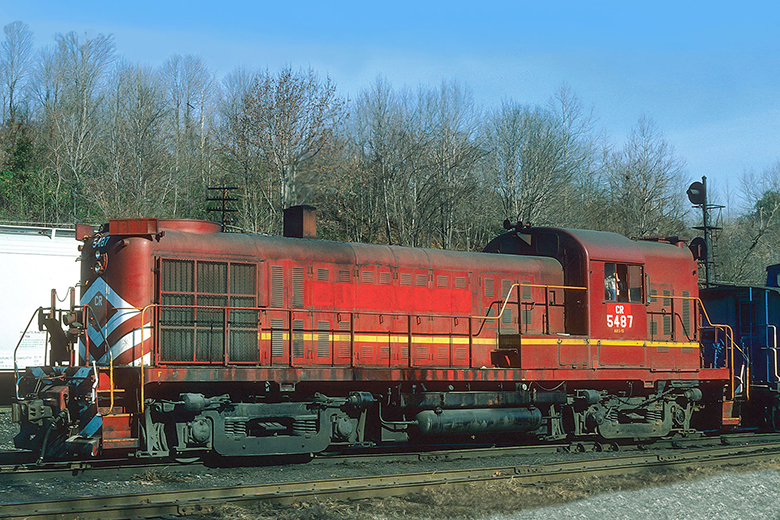
The engine was renumbered in 1966 as PRR #5569 and transferred to Penn Central in 1968, becoming PC #5569. In 1970 it was sold to the PC/PRR-controlled Lehigh Valley, but first returned to General Electric where it was restored and repainted as LV #211. The unit was moved to the Bethlehem Locomotive Terminal and served on coal branch lines and in the Allentown area steel mills.
With the advent of Conrail, the unit was renumbered CR #5487, used for a while, then shelved for a few months. By 1979, Conrail was in the final stages of rebuilding the RS3s, turning them into RS-3m "DeWitt Geeps" (recognizable by the double smoke stacks and different engine intake grilles), so called because Conrail had begun rebuilding the RSs at the DeWitt works plants in Syracuse, New York. CR #5487 became CR #9920 and adopted the official blue livery and "can opener" logo. 98 units of RS3m were re-built.
With the advent of Conrail, the unit was renumbered CR #5487, used for a while, then shelved for a few months. By 1979, Conrail was in the final stages of rebuilding the RS3s, turning them into RS-3m "DeWitt Geeps" (recognizable by the double smoke stacks and different engine intake grilles), so called because Conrail had begun rebuilding the RSs at the DeWitt works plants in Syracuse, New York. CR #5487 became CR #9920 and adopted the official blue livery and "can opener" logo. 98 units of RS3m were re-built.

ALCo RS-3 "Hammerhead" CR #5487 s/n 80580 built 12/1953 in 1977.
(Locophotos.com copyright)
(Locophotos.com copyright)

ALCo RS-3 "Hammerhead" CR #5487 s/n 80580 built 12/1953 in 1977.
(RRpicturesarchives.net copyright)
(RRpicturesarchives.net copyright)
ALCo RS-3 "Hammerhead" Conrail #5487 data
Road Number: 5487
Type: B-B diesel locomotive
Builder: ALCo
Built: 12-1953 (RS-3)
Rebuilt: 08-1979 (RS-3m EMD)
Rebuilt: 08-1979 (RS-3m EMD)
SN: 80580
Prime mover: Alco 244 V12 (EMD 567B 2000 HP such RS-3m CR #9920 by 1979)
Disposition: to Rochester & Genesee Valley Railroad Museum from 1986
Previous owner: Lehigh Valley (former Pennsylvania RR and Penn Central)
Remarks: ex LV-211
Assignment: Bethlehem, Lehigh Division (Atlantic Region)
Units in CR roster: 1
BOWSER EXECUTIVE LINE American Locomotives Company (ALCo) RS-3 "Hammerhead" CR-5487.
Offered from 2024-2025, the new Bowser replica of the ALCo RS-3 "Hammerhead" diesel-electric locomotive is certainly a good model. Once removed from its usual packaging, the HO scale reproduction of the CR-5487 shows a decidedly authentic, high-level appearance. All the necessary details are present on the locomotive's carbody. The reliefs, moldings and carvings are very well reproduced, giving a good three-dimensional vision. All the decals and lettering of the real model are present. The colors are faithful to the prototype, perhaps the "prime" red called by the Lehigh Valley company "Cornell red" appears slightly brighter (a characteristic that can be modified widely in the "weathering" phase). We point out that the original prototype (unique example) of this locomotive had differences in the cabin windows, right side and left side of different workmanship. The model reproduces the situation perfectly.
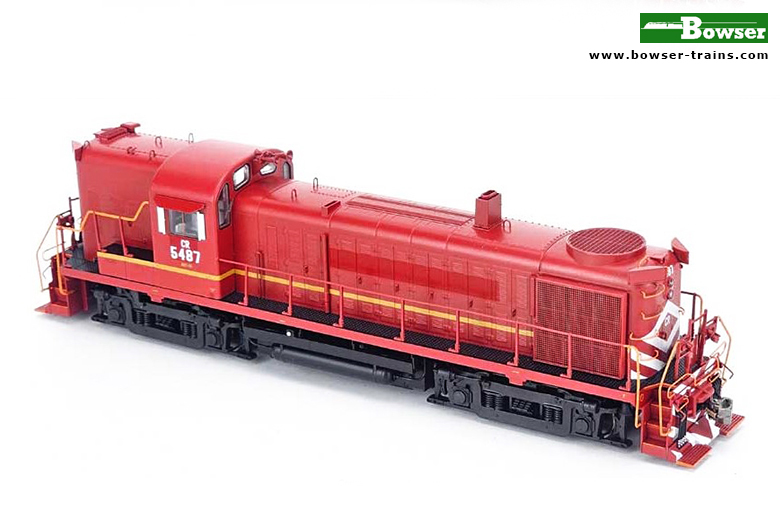
The improving work.
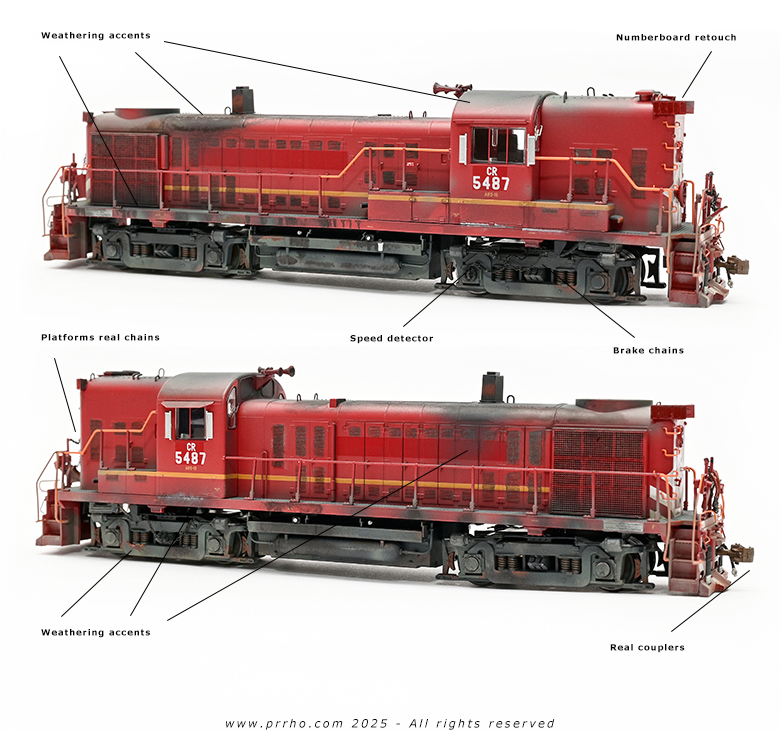

After the first "out-of-box" vision and having examined the "body" of our RS-3 "Hammerhead" Bowser replica, the inspection of the lower part with the trucks, tanks and other important equipment, leaves the same surprise, in a negative way, as other previous Bowser creations. Although printed with good engraving, the trucks lose some important details, some typical of the "early hoods" diesel locomotives produced by ALCo. The sandbox pipes are missing, as always. Then, the typical braking system with chains and brake pistons, even if, at least in this case, a part has been reproduced. One of the wheel hubs is missing the speed detector.



